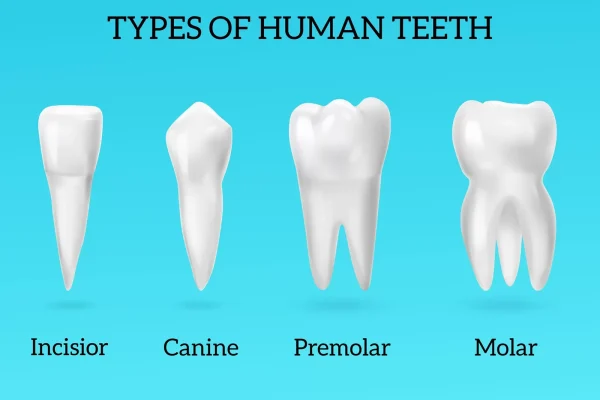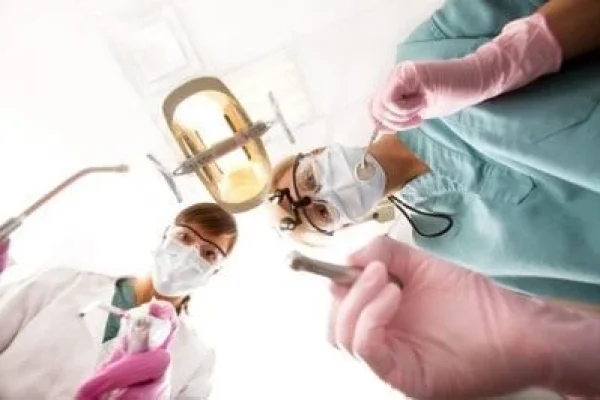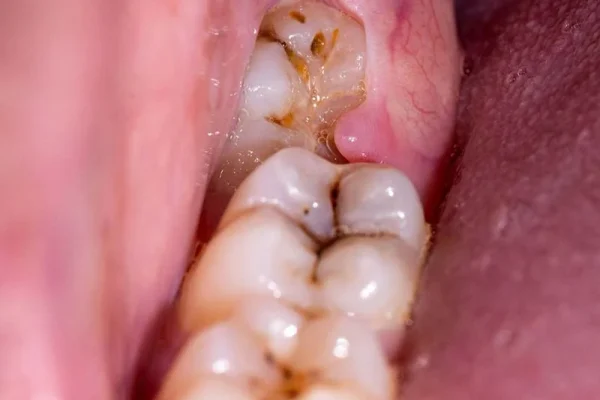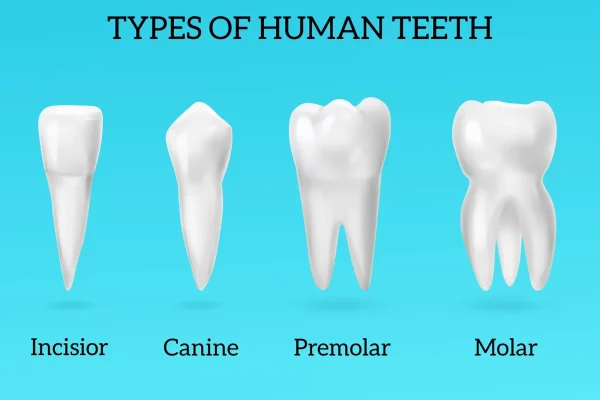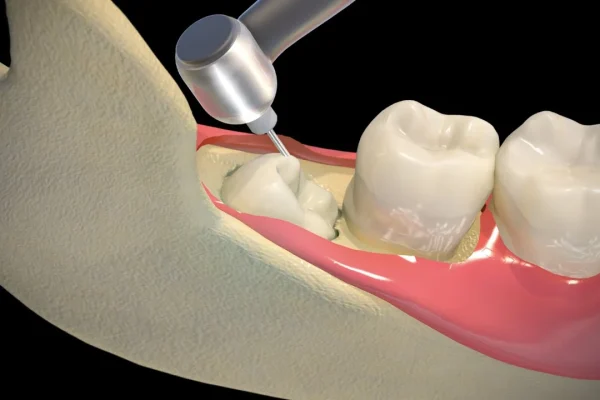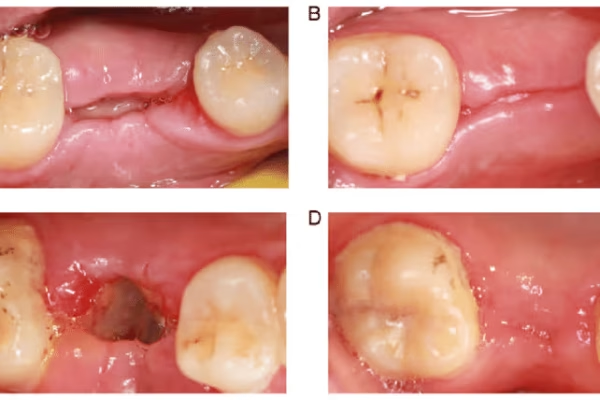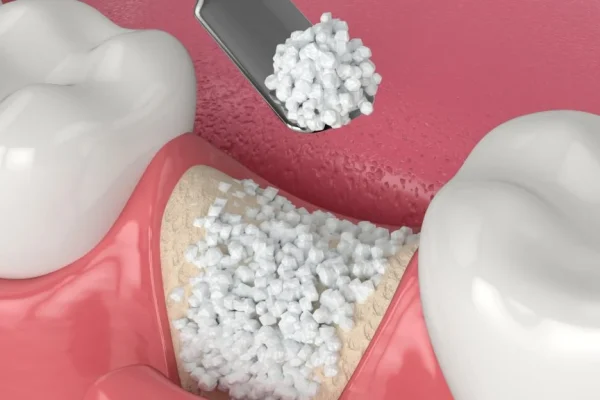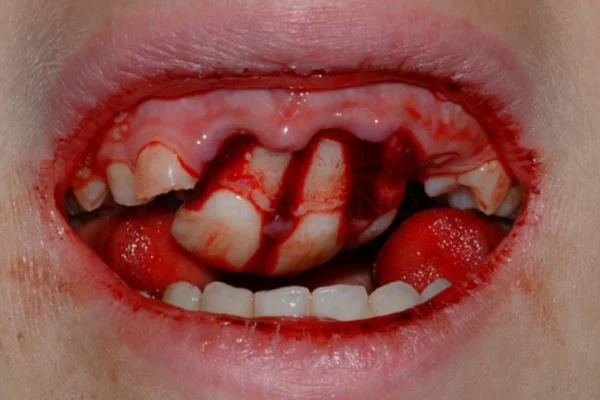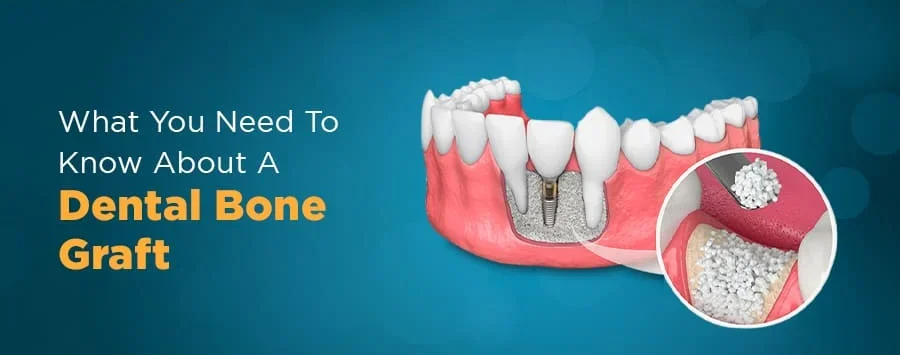
Table of Contents
ToggleKey Takeaways
-
- Dental bone graft costs vary widely, typically from $200 to $3,200+ per site, depending on complexity and location.
-
- Factors influencing cost include the type and volume of graft material, the complexity of the surgery, and the expertise of the specialist.
-
- Grafting for dental implants is a common reason and adds to the overall cost of implant treatment.
-
- The cost without insurance can be significantly higher, potentially thousands of dollars more than with coverage.
-
- Geographic location heavily impacts price, with costs differing significantly between countries like the US, UK, and Mexico.
- Bone grafting is often a necessary investment for successful future dental work or preserving natural teeth.
What is the Average Dental Bone Graft Cost You Can Expect?
Alright, let’s get down to brass tacks. When you ask, “How much do dental bone grafts cost?”, the straightforward but perhaps frustrating answer is: it varies, significantly. However, we can certainly establish a general price range to anchor your expectations. For a single site dental bone graft – meaning a relatively small area, often needed for immediate preservation after an extraction or preparing for a single tooth implant – the typical cost in many parts of the world, particularly in developed countries like the United States, can fall anywhere from roughly $200 to $3,200. Yes, that’s a broad spectrum, reflecting the myriad factors we’ll delve into shortly, but it provides a necessary starting point. Consider this the ballpark figure, the initial estimate that gets refined as we consider the specifics of your unique clinical situation. This initial figure generally encompasses the professional fees for the oral surgeon or periodontist, the cost of the grafting material itself (which, as you’ll see, varies wildly), and potentially facility fees if performed in a specialized surgical setting rather than a standard dental chair. It’s crucial to understand that this average is a composite; a simple “tooth bone graft cost” for ridge preservation after a front tooth extraction will likely sit at the lower end, while a complex procedure involving significant vertical or horizontal bone loss might push towards or even exceed the upper limit. We’re addressing the core “bone graft dental cost” here, giving you a baseline understanding before we dissect the intricate details that influence the final bill. Keep in mind that this figure typically covers the grafting procedure itself, but often not associated costs like initial consultations, necessary imaging (X-rays, CT scans), follow-up appointments, or the eventual restorative work (like an implant or bridge) that the graft makes possible. This guide aims to be your essential companion, your Dental Bone Graft Guide: Costs & Substitutes, offering not just numbers but context, ensuring you have a comprehensive picture of the financial journey ahead. Understanding this average range is the first step in preparing for the investment required to rebuild and restore your smile’s foundational strength.
What Factors Influence the Final Dental Bone Graft Cost?
Delving deeper than the simple average, we uncover the intricate web of variables that conspire to determine the precise cost of your dental bone graft. This isn’t a one-size-fits-all procedure, and its inherent complexity means that the final price tag is a highly individual calculation. Think of it as tailoring a suit; the base fabric has a price, but the complexity of the pattern, the number of fittings required, and the specific details you choose all contribute to the final cost. Similarly, in dental bone grafting, the sheer volume of bone needing replacement plays a monumental role. A small, localized defect requiring minimal material and straightforward access will naturally cost less than a widespread area of bone loss necessitating a large volume of graft and complex surgical techniques. The specific location within the mouth is another critical determinant. Grafting in the front of the mouth, while often smaller in volume, can sometimes be more delicate due to anatomical structures and aesthetic considerations. Grafting in the back of the upper jaw might involve a sinus lift procedure, which adds significant complexity, time, and therefore cost. Lower jaw grafting can also present challenges depending on the proximity of nerves. The type of bone loss itself – whether horizontal (affecting the width of the ridge) or vertical (affecting the height) – impacts the surgical approach and material required, further influencing the price. Furthermore, the overall health of the patient, the presence of underlying conditions (like gum disease or uncontrolled diabetes), and whether other procedures are being performed concurrently (like an extraction or implant placement) can all add layers of complexity and cost. This section is designed to shed light on these “Other Factors Influencing Cost,” moving beyond the basic procedure to explore the nuanced elements that shape your personalized treatment plan and, subsequently, its price. Understanding these factors is paramount to deciphering your specific quote and appreciating the value of the highly skilled work being performed. It’s about recognizing that the cost reflects the precision, expertise, and resources dedicated to rebuilding your oral foundation, ensuring stability and long-term success for whatever dental work follows.
What is the Cost of Bone Graft Material?
The very essence of a dental bone graft lies in the material used to stimulate or replace bone, and the choice of material is a colossal factor in the overall cost. Imagine building a house; the type of bricks, concrete, and timber you select drastically impacts the budget. Similarly, the source and nature of the grafting material significantly influence the price of the dental procedure. There are primarily four types, each with its own cost implications: autograft, allograft, xenograft, and alloplast. An autograft, considered the gold standard by many clinicians because it uses the patient’s own bone (often harvested from the jaw, hip, or tibia), eliminates the risk of rejection and disease transmission. However, harvesting this bone requires a second surgical site, which adds considerable cost due to the complexity of the procedure, additional anesthesia, and potentially a longer recovery time. This is often the most expensive option per procedure, even if the material itself isn’t purchased from an external source, because you’re paying for the harvesting surgery. Allograft uses bone tissue from a human donor, which has been processed and sterilized for safety. This eliminates the need for a second surgical site on the patient, making the procedure simpler from that perspective. The cost here is primarily associated with the processing and sourcing of the donated tissue, which can be substantial, typically ranging from a few hundred to over a thousand dollars for a small vial, depending on the supplier and volume. Xenograft material comes from a non-human species, most commonly cow bone (bovine) or sometimes pig bone (porcine). Like allografts, these materials are rigorously processed to ensure biocompatibility and safety. Xenografts are generally less expensive than allografts or autografts because the source material is more readily available. Finally, alloplasts are synthetic bone graft materials, often composed of calcium phosphate or bioactive glass. These are manufactured materials designed to mimic the structure of natural bone and stimulate regeneration. Alloplasts are typically the most cost-effective option in terms of material cost, as they are synthetically produced. The volume of material needed is also directly correlated with the cost – a defect requiring a small pinch of graft will cost far less for the material than a large defect needing several grams. Thus, the specific type and quantity of graft material prescribed for your case are fundamental determinants of the final expense, reflecting the intricate biological and processing costs associated with each option.
How Much Does a Bone Graft Cost for a Single Tooth or Around Teeth?
Addressing bone loss localized to a specific area, perhaps around a single tooth compromised by periodontal disease or intended to preserve the socket after extraction, often involves a targeted grafting procedure. This isn’t typically a large-scale jaw reconstruction but rather a precise intervention to restore support in a limited zone. When considering “how much does a bone graft cost for a tooth?” or “how much does a bone graft around teeth cost?”, you are generally looking at costs associated with these localized defects. The price range for such focused procedures is often on the lower end of the overall bone grafting spectrum, potentially starting from around $400 and going up to $1,600 or more per site. This figure depends heavily on the size and depth of the bone loss around that specific tooth or extraction site, as well as the type of material used, as discussed previously. For instance, a small defect near the surface of the gum line might require only a minimal amount of synthetic or donor bone material, keeping the cost relatively low. Conversely, a deeper defect extending further down the tooth root or involving a significant portion of the socket walls will demand more material and potentially more complex surgical manipulation, increasing the price. Periodontal bone grafts, specifically aimed at regenerating bone lost due to gum disease around existing teeth, fall into this category. Their cost is influenced by the number of teeth involved, the extent of the bone loss around each tooth, and whether additional procedures, such as guided tissue regeneration (using membranes to direct tissue growth), are necessary. These factors combine to determine the complexity and resource requirements for regenerating the bone scaffolding precisely where it’s needed to support the existing dentition or prepare a specific spot for future restoration. While generally less expensive than full jaw reconstruction or extensive sinus lifts, these localized grafts still represent a significant investment in preserving specific dental units and maintaining the structural integrity of the surrounding bone. Understanding that the cost correlates directly with the scope and intricacy of the work needed around the specific tooth or teeth helps clarify the pricing for these targeted interventions.
How Does Dental Bone Graft Cost Without Insurance Compare to Having Coverage?
Ah, the insurance question – often the most significant variable for patients navigating healthcare costs. When it comes to dental bone grafting, the difference between having robust dental insurance coverage and paying completely out-of-pocket can be staggering. Without insurance, you are responsible for the full, undiscounted fee charged by the dentist or oral surgeon and the facility. As established earlier, this can range anywhere from a few hundred dollars for a very simple, localized graft to several thousand dollars for a more complex procedure involving multiple sites, specialized materials, or additional steps like harvesting bone. For instance, a standard single-site graft that might cost $800 to $1500 out-of-pocket could see a significant portion covered by insurance if it’s deemed medically necessary or a precursor to a covered procedure like an implant (though implant coverage itself varies widely). When you ask “How Much Does a Dental Bone Graft Cost Without Insurance?”, be prepared for figures that reflect the full price of materials, surgeon’s time, facility use, and associated overheads – potentially $2,000, $3,000, or even higher for extensive cases. Now, compare this to “How Much Does a Bone Graft Cost With Insurance?”. Dental insurance plans typically have annual maximums (often between $1,000 and $2,000), deductibles, and co-pays or coinsurance percentages. Bone grafting procedures may be classified under major restorative services, meaning the plan might cover only 50% of the cost after you’ve met your deductible, up to your annual maximum. If your graft costs $1,500 and you have a $100 deductible and 50% coverage for major services, your out-of-pocket expense might be ($1,500 – $100) * 0.50 + $100 = $700 + $100 = $800, provided you haven’t hit your annual maximum with other treatments. However, if the graft is deemed purely cosmetic or solely preparatory for an implant (and the implant isn’t covered), insurance might not cover it at all. The level of coverage depends entirely on your specific plan’s details regarding major procedures, pre-implant procedures, and whether the bone loss necessitating the graft is due to disease (like periodontitis, which might be partially covered) or extraction/trauma. Always get a pre-authorization from your insurance company and a detailed estimate from your dental provider to understand your specific financial responsibility, as the delta between insured and uninsured costs can be immense, easily running into thousands of dollars depending on the procedure’s scope.
How Much is Bone Grafting For Dental Implants?
One of the most common reasons people require dental bone grafting is as a preparatory step for receiving dental implants. Implants, those small titanium posts that act as artificial tooth roots, require a certain volume and density of bone in the jaw to be successfully placed and integrate securely. When teeth have been missing for a while, or following difficult extractions, the jawbone often deteriorates or resorbs, leaving insufficient bone to support an implant. This is where bone grafting becomes indispensable, serving as the crucial foundation-laying procedure. The cost of grafting specifically for dental implants is often intertwined with the overall implant treatment plan, though it is a distinct procedure with its own set of fees. It’s a significant part of “The Cost of Bone Grafting for Dental Implants,” and understanding this separate cost is vital when budgeting for tooth replacement. The price range for bone grafting done for implant purposes can vary widely based on the extent of the bone loss, the location of the missing tooth (grafting for front teeth can differ from molars, and upper jaw grafting, especially near the sinus, is more complex), and the chosen grafting technique. A straightforward socket preservation graft immediately after extraction (to maintain bone width for a future implant) might be on the lower end, potentially costing a few hundred dollars combined with the extraction. However, grafting to build up a severely resorbed jaw ridge, perhaps years after tooth loss, or a sinus lift procedure (where bone is added to the upper jaw where the sinus cavity has expanded into the space needed for implant placement) can easily cost several thousand dollars per site. These more complex procedures require specialized surgical skills, more extensive grafting material, and often longer healing periods. Therefore, while bone grafting adds to the total expense of getting a dental implant, it’s frequently a non-negotiable step to ensure the implant’s success and longevity, making it a necessary part of the investment in a stable, functional tooth replacement. Budgeting for implant treatment must always include the potential need and associated cost of preparatory bone grafting if bone volume is insufficient.
What is the Cost of Bone Grafting Before Dental Implants?
Focusing specifically on the scenario where bone grafting is performed as a distinct, standalone procedure prior to the actual implant surgery, the costs can be calculated more clearly as a separate phase of treatment. This is often the case when significant healing time is needed for the grafted bone to mature and integrate with the existing jawbone, a process that can take several months. When considering “What is the Cost of Bone Grafting Before Dental Implants?”, you’re looking at the expense for this initial reconstructive step. The cost for this preparatory graft can range from approximately $600 to $2,500 per site for moderate cases, and significantly higher, potentially $3,000 to $5,000 or more, for complex procedures like large ridge augmentations or sinus lifts required to build sufficient vertical or horizontal bone height for implant placement. This price typically includes the surgeon’s fee, the cost of the grafting material itself, and any necessary membranes or fixation devices used to hold the graft in place during healing. It’s essentially the cost of creating a viable landing strip for the future implant. The specific amount you pay will depend on the same factors influencing all bone grafts: the type and volume of material, the complexity of the surgery required to place and secure the graft, and the expertise of the surgeon performing the procedure. For instance, a patient needing a sinus lift in the upper jaw to accommodate implants for missing back teeth will face a substantially higher grafting cost than someone requiring a small amount of bone added to the width of the ridge after losing a lower front tooth. This preparatory phase is crucial; proceeding with implant placement in insufficient bone is a recipe for failure. While it adds to the overall timeline and expense of implant treatment, investing in adequate bone structure beforehand dramatically increases the predictability and long-term success rate of the dental implant, making it a valuable and often essential expenditure in the journey towards a stable and durable tooth replacement. This addresses “How much does jawbone grafting cost for dental implant placement?” specifically in the context of a separate, preliminary procedure.
What is the Cost of Bone Graft For Teeth Implant and Extraction?
A very common clinical scenario involves a tooth extraction followed immediately by bone grafting in the empty socket. This procedure, known as socket preservation or ridge preservation, is performed with the primary goal of preventing the natural shrinkage of the jawbone that occurs after a tooth is removed. By filling the socket with graft material, the dentist helps maintain the width and height of the alveolar ridge, making it much easier (and often less costly in the long run) to place a dental implant in that location later. When patients ask about the “Cost of Bone Graft For Teeth Implant and Extraction,” they are often referring to this combined procedure. The cost for socket preservation performed concurrently with an extraction is typically less than if the graft were done as a separate procedure months or years later. This is because the surgical site is already open for the extraction, minimizing the need for additional incisions and surgical time. The combined cost for a tooth extraction and immediate bone graft typically ranges from $500 to $1,500 or more, depending on the complexity of the extraction, the type and volume of graft material used for preservation, and the location of the tooth. For example, a straightforward front tooth extraction with a small socket preservation graft might be at the lower end of this spectrum, while a surgical extraction of a molar followed by a larger graft could be significantly more expensive. This cost covers both the removal of the tooth and the immediate placement of the bone graft material into the socket. While it adds to the immediate cost of the extraction, many dentists and oral surgeons recommend this approach because it significantly improves the chances of successful implant placement in the future by minimizing bone loss. It’s a proactive measure that often avoids the need for more extensive and expensive grafting procedures down the line to rebuild a severely resorbed ridge. Therefore, understanding the “Cost of Tooth Extraction and Dental Bone Graft” as a single package deal is essential for those planning eventual implant placement after losing a tooth.
Why is Dental Bone Grafting So Expensive?
It’s a valid question that crosses many patients’ minds: “Why is bone grafting so expensive?” At first glance, the figures can seem high for a procedure that doesn’t immediately result in a visible tooth. However, when you dissect the components and complexity of dental bone grafting, the costs begin to make sense. Firstly, this is a specialized surgical procedure, not a routine filling or cleaning. It requires a highly skilled dental professional – typically an oral surgeon or periodontist – who has undergone extensive post-doctoral training specifically in surgical techniques, bone biology, and grafting procedures. Their expertise, precision, and years of education are a significant part of the cost. Secondly, the materials used are not inexpensive. As we’ve discussed, whether it’s processed human donor tissue, purified animal bone, or sophisticated synthetic composites, these materials undergo rigorous processing, sterilization, and testing to ensure safety and efficacy. Harvesting autograft bone from the patient introduces the cost of a second surgical site, increasing operating time and complexity. Thirdly, the procedure often requires more than just local anesthetic. Sedation dentistry or even general anesthesia might be necessary, particularly for complex or lengthy cases, adding fees for the anesthesiologist and the anesthetic agents themselves. Fourthly, the facility where the procedure is performed contributes to the cost. While some simpler grafts can be done in a standard dental office, more complex procedures might require a sterile surgical suite, which has higher overheads. There are also costs associated with sterile supplies, specialized instruments, diagnostic imaging (like 3D cone-beam CT scans needed for precise planning), and post-operative care protocols. The “graft fee” you might see itemized on an estimate often encapsulates the cost of the grafting material itself, but it can also sometimes bundle facility use, specific surgical trays, or associated supplies. Essentially, the cost reflects the confluence of highly specialized expertise, expensive and carefully processed biological or synthetic materials, the potential need for advanced anesthesia, the overheads of a surgical facility, and the intricate nature of manipulating living tissue and stimulating bone regeneration. It’s an investment in a foundational biological process critical for long-term oral health and restorative success, and the price reflects the advanced nature of this reconstructive surgery.
How Does Dental Bone Graft Cost Vary By Location?
Just like real estate, haircuts, or a gallon of milk, the cost of dental procedures, including bone grafting, is heavily influenced by geographic location. Where you live or where you choose to have your procedure done can dramatically swing the final price tag. This phenomenon is driven by a multitude of factors inherent to different regions and countries. Labor costs for highly trained dental specialists, general overheads for running a dental practice (rent, utilities, staff salaries), the cost of materials and supplies (which can vary based on import taxes or local distributors), and even the prevailing economic conditions and average income levels in a specific area all play a role in shaping dental fees. This is the section where we specifically address “Dental Bone Graft Cost by Location.” Consider the vast difference between dental costs in a major metropolitan city known for its high cost of living versus a rural town, or even the significant disparity between countries with advanced healthcare systems versus those where dental tourism is a booming industry specifically because of lower prices. High-demand areas with fewer specialists relative to the population might also see higher prices. Furthermore, regulatory environments, licensing fees, and malpractice insurance costs for dental professionals differ significantly across states, regions, and countries, and these expenses are inevitably factored into the cost of procedures. Understanding this geographical variance is crucial for patients, as exploring options in different locations, while requiring travel, might offer substantial cost savings, particularly for complex or multiple grafting procedures. However, choosing a location solely based on price without researching the credentials and experience of the dental professional and the quality of the facility is never recommended for such a critical surgical procedure. The location-based cost differences are a tangible reflection of the economic environment and operational expenses faced by dental practices and professionals in diverse geographical settings.
How Much Does a Dental Bone Graft Cost in the US?
Within the United States, the cost of a dental bone graft exhibits considerable variation, influenced by the factors mentioned earlier, such as regional economics, urban vs. rural settings, and the specific practice’s pricing structure. Generally speaking, the US tends to be on the higher end of the global spectrum for dental procedure costs, reflecting high overheads, specialist training expenses, and insurance complexities. When asking “How Much Does a Dental Bone Graft Cost in the US?”, you should anticipate a wide range, typically from around $300-$800 for a very simple, small procedure like a socket preservation graft immediately after extraction using particulate donor bone, up to $2,500 – $3,500 or more for larger grafts or those requiring complex techniques like guided bone regeneration with membranes. Procedures involving harvesting the patient’s own bone (autograft) or extensive vertical/horizontal ridge augmentations can easily exceed $4,000, and a complex sinus lift might range from $1,500 to $5,000 or even higher per side, depending on the technique and material volume. These figures represent the cost of the grafting procedure itself and usually do not include the initial consultation, diagnostic imaging (like necessary CT scans which can add several hundred dollars), follow-up visits, or the cost of the eventual restorative work (like the dental implant). Costs can certainly vary state by state or even city by city; procedures in bustling coastal cities like New York or Los Angeles will typically be more expensive than in the Midwest or less populous states. Similarly, a highly specialized practice in a prime urban location will have higher fees than a general dental practice in a suburban area, even if they perform similar grafting procedures. It is always recommended to get detailed, itemized estimates from multiple providers in your area (or planned treatment location) to understand the specific costs associated with your individual case within the US market.
How Much is a Dental Bone Graft in the UK?
Across the pond in the United Kingdom, the landscape of dental care includes both the National Health Service (NHS) and private practices, which significantly impacts the potential cost of a dental bone graft. On the NHS, procedures are categorized into bands with fixed costs. However, reconstructive procedures like bone grafting, especially when performed for the purpose of enabling dental implants, are often considered elective or not clinically necessary for basic oral health and are therefore rarely available or funded through the NHS. This means that for most patients requiring a bone graft as preparation for implants or to save teeth severely affected by bone loss from periodontitis, the procedure will need to be done privately. When considering “How Much is a Dental Bone Graft in the UK?” within the private sector, costs can range significantly, generally falling between £500 to £2,500 for straightforward localized grafts. More complex procedures, such as substantial ridge augmentation or sinus lifts, can cost anywhere from £2,000 to £4,000 or more per site. These figures are broadly comparable to, or slightly less than, average costs in the US, reflecting different operational costs, insurance structures, and market dynamics within the UK. Private dental insurance in the UK exists but often has limitations on major procedures, annual maximums, and waiting periods, so coverage for bone grafting can be limited. Patients in the UK opting for private treatment need to be prepared to cover a substantial portion, if not all, of the costs out-of-pocket. Factors such as the specific city or region within the UK (London practices typically have higher fees), the experience and specialization of the clinician, and the complexity of the individual case will all influence the final “Cost of Dental Bone Graft in UK”. As with any significant dental investment, obtaining a detailed written estimate from the private practitioner is crucial for budgeting and understanding the full financial commitment involved in receiving a bone graft in the UK.
What is the Cost of Dental Bone Graft In Mexico?
For individuals residing in countries with high healthcare costs, exploring options abroad, often referred to as dental tourism, has become increasingly popular. Mexico is a prominent destination for dental work due to its proximity to the United States and Canada and significantly lower costs compared to these countries. When investigating “What is the Cost of Dental Bone Graft In Mexico?”, you will typically find prices that are substantially less than those in the US or UK. The cost for a dental bone graft in Mexico can range from approximately $300 to $1,000 for a single site or straightforward procedure, potentially going up to $1,500 to $2,500 or more for more complex cases or sinus lifts. These figures can represent savings of 50% or more compared to average prices north of the border or across the Atlantic. This affordability is largely driven by lower overhead costs for dental practices, lower living expenses leading to lower labor costs for dental staff and specialists, and a different economic scale. However, while the potential cost savings are attractive, patients considering dental bone grafting in Mexico (or any country for dental tourism) must exercise due diligence. Researching the clinic’s reputation, the credentials and training of the dentist or surgeon (confirming they are specialists experienced in bone grafting), the quality of materials used (ensuring they meet international standards), and the sterilization protocols is absolutely crucial. While costs are lower, compromising on quality or safety could lead to complications that ultimately prove more expensive and detrimental to health than paying a higher price at home. The cost savings in Mexico are real, offering accessibility to procedures that might be financially out of reach otherwise, but they come with the responsibility of thorough research and vetting to ensure patient safety and treatment success.
Are There Other Locations with Varying Dental Bone Graft Costs?
Absolutely. The global variation in dental costs is vast, and while the US, UK, and Mexico offer distinct examples, numerous other locations present their own unique pricing structures for dental bone grafting. Countries known for medical and dental tourism often feature competitive pricing. For instance, “Dental Bone Graft Cost In Turkey” is frequently cited as significantly lower than in Western Europe or North America, with costs potentially ranging from $400 to $1,500 or more depending on complexity. This aligns with Turkey’s position as a popular destination for affordable cosmetic and medical procedures. Similarly, countries in Eastern Europe, parts of Asia (like Thailand or India), and Central/South America often offer lower dental costs. Even within large countries, costs can vary considerably between different states or regions. For example, while we discussed US averages, specific locations like “Dental Bone Graft Cost in Utah” might fall within the typical US range but could differ from costs in, say, California or New York due to local economic factors, cost of living, and the density of specialists. Similarly, breaking down costs to a county level, like “How Much Does Bone Grafting Cost in Nassau County, NY?”, would reveal pricing specific to a high-cost suburban area of a major metropolitan region, likely placing it towards the upper end of the US price scale. The key takeaway is that dental bone grafting costs are highly geographically sensitive. Factors influencing these differences include the local cost of living, the average income of the population, the regulatory environment for dental practices, the cost of supplies within that country, and the level of competition among dental providers. Patients willing to travel and invest time in research can potentially find significant cost variations, allowing them to access treatment that might otherwise be financially prohibitive. However, the importance of vetting the quality of care and materials in any location cannot be overstated, regardless of how attractive the price might be.
Is Dental Bone Grafting Worth the Cost?
This is a deeply personal question, and the answer hinges entirely on your individual circumstances, oral health goals, and financial situation. However, from a clinical perspective, dental bone grafting is often not just a procedure of convenience but a necessary intervention to preserve oral health, restore function, and enable future treatments. So, “Is dental bone grafting worth it?” For many, the answer is a resounding yes, particularly when considering the long-term benefits. If you have lost significant bone due to tooth extraction or periodontal disease, and you are considering dental implants to replace missing teeth, a bone graft is frequently a prerequisite for success. Without adequate bone, an implant simply cannot be placed securely, or its longevity will be compromised. In this context, the cost of the graft is an essential investment in the stability and functionality of a permanent tooth replacement. Furthermore, in cases of advanced periodontal disease, bone grafting can sometimes be used in conjunction with other treatments to regenerate bone support around natural teeth that are becoming loose. While not always successful in saving severely compromised teeth, a periodontal graft can, in favorable conditions, provide enough regenerated support to stabilize a tooth, potentially extending its lifespan by years. In this scenario, the graft is an investment in preserving your natural dentition, which is often preferable to extraction and replacement. Beyond the functional aspects, bone loss can lead to changes in facial structure over time, giving a sunken appearance to the jaw. Grafting, especially after tooth loss, helps maintain the natural contours of the jawbone, preserving facial aesthetics. Weighing the cost against the ability to receive stable implants, potentially save natural teeth, maintain jaw structure, and improve overall oral health and quality of life (including the ability to eat and speak properly) is key. While the upfront expense is considerable, the long-term benefits of a stable foundation for future dental work or the preservation of existing teeth can far outweigh the initial cost, preventing more extensive and potentially more expensive problems down the line. It’s an investment in the structural integrity of your mouth.
Understanding the Dental Bone Graft Procedure
Stepping into a dental office for a bone graft, understanding what the procedure actually entails can alleviate anxiety and prepare you for the experience. While the specifics vary depending on the type of graft and the location in the mouth, the general process follows a predictable sequence. The initial step always involves a thorough examination, including reviewing your medical history, performing a clinical assessment, and taking detailed imaging, often including traditional X-rays and potentially a 3D cone-beam CT scan. This imaging allows the dentist or surgeon to precisely measure the extent of bone loss and plan the surgical approach, determining the size of the defect and the amount and type of graft material needed. On the day of the surgery, local anesthesia is administered to numb the area completely. Sedation (oral, inhaled, or intravenous) is also frequently offered or recommended to help you relax during the procedure, adding to the cost but increasing comfort. Once the area is numb and you are comfortable, the surgeon makes an incision in the gum tissue to expose the underlying bone defect. The recipient site is carefully prepared to receive the graft material. If an autograft (your own bone) is being used, a separate small incision is made at the donor site (e.g., another area in the mouth, hip, or tibia) to harvest the required bone. The chosen graft material (autograft, allograft, xenograft, or alloplast) is then carefully placed into the bone defect. If necessary, the surgeon may use a special membrane (like a collagen membrane) to cover the graft material. This membrane acts as a barrier, preventing the faster-growing gum tissue from migrating into the bone graft site and ensuring space for the slower-growing bone cells to regenerate. The graft material might also be stabilized with small pins or screws in some cases. Finally, the gum tissue is sutured closed over the graft site using dissolvable stitches. The dentist provides post-operative instructions regarding pain management, swelling control, diet, and oral hygiene. This addresses “How do dentists do a bone graft?”, outlining the key steps involved in this intricate surgical process designed to rebuild lost bone structure. The procedure requires precision, aseptic technique, and a thorough understanding of bone biology to ensure successful integration and healing of the grafted material.
Is Bone Grafting Painful?
It’s a common concern: “Is bone grafting painful?” The prospect of manipulating bone tissue naturally raises questions about discomfort. During the procedure itself, you should not experience pain. Before the surgery begins, the area is thoroughly numbed with local anesthetic, much like receiving a filling or extraction. For more complex procedures or anxious patients, sedation is often used, which significantly reduces awareness and discomfort during the surgery. This means that while the surgeon is working, you should feel at most some pressure or vibration, but not pain. The discomfort typically arises after the anesthetic wears off, during the healing phase. The level of post-operative pain varies depending on the extent and location of the graft, as well as your individual pain tolerance. A simple socket preservation graft is usually associated with mild to moderate discomfort, often manageable with over-the-counter pain relievers like ibuprofen or acetaminophen. You might experience some aching, swelling, and bruising around the surgical site. For more extensive procedures, such as large ridge augmentations or autografts requiring a second donor site, the post-operative pain can be more significant. In these cases, your surgeon will likely prescribe stronger pain medication to ensure your comfort during the initial healing period, which is usually the first few days after the surgery. Discomfort from a hip or tibia donor site for an autograft can sometimes be more significant than the oral surgical site. Swelling and bruising are also common and usually peak 24-48 hours after the procedure. Your dentist or surgeon will provide specific post-operative instructions on managing pain and swelling, which may include using ice packs, taking prescribed medications on schedule, and sticking to a soft diet. While some level of discomfort is expected during recovery, severe or worsening pain is not normal and should prompt you to contact your dental provider immediately. Overall, while it’s a surgical procedure with expected post-operative soreness, modern pain management techniques make dental bone grafting a manageable experience in terms of pain levels.
What is Next After Bone Graft?
Once the dental bone graft procedure is complete and the initial post-operative healing phase (dealing with swelling, pain, and discomfort) has passed, you enter a critical period of waiting and recovery. “What is Next After Bone Graft?” primarily involves allowing the graft material time to integrate with your existing jawbone, a process called osseointegration. This isn’t a speedy process; it requires patience and diligent adherence to your surgeon’s post-operative instructions. The initial soft tissue healing, where the gums close over the surgical site, typically takes about 1-2 weeks. During this time, you’ll likely have a follow-up appointment with your dentist or surgeon to check the healing site, remove any non-dissolvable sutures, and ensure there are no signs of infection or complications. Following this, the real work happens microscopically within the bone. The graft material acts as a scaffold or provides cells that gradually merge with and are replaced by your own bone cells. This process of bone regeneration and maturation takes time – typically anywhere from 3 to 9 months, and sometimes even longer, depending on the size and location of the graft and the individual’s healing capacity. During this period, you will need to be very careful with the surgical site, avoiding putting pressure on it and sticking to a modified diet as recommended. Regular follow-up appointments may be scheduled to monitor the healing progress, sometimes involving follow-up X-rays. Once the surgeon determines that the graft has successfully healed and integrated, providing a solid, stable foundation, you can then proceed with the next planned step. If the graft was done to prepare for a dental implant, the next phase would be the implant surgery itself. If the graft was performed for periodontal reasons to support a natural tooth, the focus would shift back to ongoing periodontal maintenance to protect the regenerated bone. The period after a bone graft is largely one of quiet, biological regeneration, requiring careful management and adherence to professional guidance to ensure the ultimate success of the procedure and pave the way for the desired future dental restorations or continued health of natural teeth.
How Long Do Dental Bone Grafts Last?
When a dental bone graft is successful, its intended purpose is to provide a durable, long-lasting foundation for the future, essentially becoming a permanent part of your jawbone structure. The question “How Long Do Dental Bone Grafts Last?” implies a lifespan, but a successful graft doesn’t “expire” in the way a filling or crown might need replacement. Instead, the goal is for the graft material to be integrated into and remodeled by your body’s natural bone, effectively becoming new, vital jawbone tissue. Once this integration (osseointegration) and remodeling process are complete, the grafted site should theoretically last for the rest of your life, just like your original bone, assuming it is supported by good oral hygiene and overall health. However, the longevity and success of the graft are contingent upon several factors. The primary factor is the initial success of the integration process; if the graft fails to heal properly, gets infected, or is rejected by the body (though rare with modern materials), it will not last. Success rates for dental bone grafts are generally very high, often exceeding 90-95% when performed by experienced specialists. Another critical factor is the continued health of the surrounding tissues. Periodontal disease, for example, is a major cause of bone loss. If the underlying cause of the original bone loss (like active gum disease) is not managed effectively after the graft, the newly regenerated bone can also be lost over time. Poor oral hygiene, smoking, certain medical conditions (like uncontrolled diabetes), and excessive forces on the area (like grinding teeth or ill-fitting dentures) can all negatively impact the long-term health of the grafted bone. If the graft is supporting a dental implant, the longevity of the grafted bone is tied to the health and success of the implant; maintaining the health of the tissues around the implant through regular check-ups and cleaning is crucial. In essence, a successfully integrated bone graft provides a permanent structural improvement, but its ability to withstand future challenges depends on ongoing oral health maintenance and preventing a recurrence of the conditions that led to the initial bone loss. It’s a permanent addition, but requires care to remain healthy.
Can I Get a Bone Graft and Not Get an Implant?
Yes, absolutely. While bone grafting is very commonly performed as a prerequisite for dental implant placement, it is not exclusively tied to implants. There are several clinical situations where a dentist or periodontist might recommend a bone graft even if you have no intention of getting an implant, either now or in the future. This directly answers the question, “Can I get a bone graft and no implant?”. One primary reason is socket preservation following tooth extraction, even if the plan is to replace the missing tooth with a bridge or partial denture. When a tooth is removed, the bone that previously supported it naturally begins to resorb or shrink because it no longer receives the functional stimulation from the tooth root. Over time, this shrinkage can lead to significant defects in the jawbone, which can affect the fit and aesthetics of conventional bridges or removable partial or full dentures (which rest on the gums and underlying bone, but do not provide the same stability or bone stimulation as implants). Placing a bone graft into the socket immediately after extraction helps to minimize this bone loss, preserving the volume and contour of the jawbone. This makes future restorative work easier and helps maintain the overall structural integrity of the jaw, even without an implant. Another common scenario where a bone graft is performed without subsequent implant placement is in the treatment of periodontal disease. When gum disease leads to significant bone loss around natural teeth, grafting procedures can be used to attempt to regenerate some of the lost bone support. The goal here is to stabilize and save the existing tooth (or teeth) by restoring a portion of the bone that holds it in place, rather than replacing the tooth with an implant. While the success of regenerating bone lost to severe periodontitis can vary, it is a viable treatment option aimed at prolonging the life of natural teeth. Therefore, bone grafting serves multiple purposes beyond just preparing for implants, including preserving bone volume for conventional prosthetics and attempting to save periodontally compromised teeth, making it a valuable procedure even if implants are not in your treatment plan.
Exploring Alternatives to Dental Bone Grafting
While dental bone grafting is often the most effective method for regenerating significant bone loss and providing a stable foundation for restorations like implants, it’s natural to wonder about other options. Are there ways to address bone loss without surgery, or different approaches altogether? This section explores the realm of “What is an alternative to bone graft?”. The availability of alternatives largely depends on the severity and location of the bone loss, as well as the patient’s overall oral health and treatment goals. For very minor defects or in specific anatomical locations, sometimes guided tissue regeneration (GTR) or guided bone regeneration (GBR) techniques using barrier membranes alone, without bulk grafting material, can stimulate some level of bone healing. However, these techniques are often used in conjunction with bone grafts rather than as a complete substitute when significant volume is missing. In situations where bone loss is extensive and a patient is unable or unwilling to undergo grafting and implant surgery, alternative tooth replacement options that do not require the same level of bone support might be considered. These include traditional bridges (which rely on adjacent teeth for support) or removable partial or full dentures (which rest on the gums and underlying bone, but do not provide the same stability or bone stimulation as implants). While these are viable alternatives for tooth replacement, they do not address the underlying bone loss itself, and in the case of dentures and bridges, bone resorption can continue over time. For patients where grafting for implants isn’t feasible or desired, but a fixed solution is preferred, sometimes smaller diameter or shorter implants might be an option in areas with limited bone, although this approach has its own limitations and risks compared to standard implant placement in adequate bone. Ultimately, while there are ways to replace teeth without bone grafting, there are few direct surgical alternatives that achieve the same level of bone regeneration as a successful bone graft when significant volume is needed. The alternative often lies in choosing a different restorative pathway that doesn’t demand the same bony foundation.
Can You Regrow Jaw Bone Naturally or Reverse Dental Bone Loss Naturally?
The desire for a non-surgical fix is powerful, leading many to ask, “Can you regrow jaw bone naturally?” or “How to reverse dental bone loss naturally?”. It’s important to address this with a clear and realistic perspective. Unfortunately, once a significant volume of jawbone has been lost due to factors like tooth extraction, periodontal disease, or trauma, the body generally does not have the capacity to regenerate that lost bone naturally to the extent needed to support a dental implant or stabilize a tooth with severe bone loss. Minor bone defects might see some limited natural healing, especially if the underlying cause is removed (like successful treatment of early gum disease), but substantial, structural bone regeneration for reconstructive purposes requires intervention. Dietary changes, such as ensuring adequate intake of calcium and Vitamin D (“What vitamin is good for bone loss in teeth?”), and general healthy lifestyle choices are undoubtedly crucial for maintaining existing bone density and overall health, including the health of your jawbone. However, these nutritional factors alone cannot reverse significant bone loss that has already occurred or stimulate the regrowth of substantial bone volume in a defect site. Similarly, while general physical activity is good for bone density elsewhere in the body, activities like chewing gum (“Does chewing gum increase bone density?”) are not scientifically proven to increase jawbone density in areas of significant loss or to regenerate bone volume. The only reliable methods for regrowing lost jawbone volume to a clinically significant degree involve surgical procedures like dental bone grafting, which introduce materials that either serve as a scaffold for new bone growth or contain growth factors that stimulate bone formation. Therefore, while maintaining a healthy lifestyle is vital for preventing further bone loss and supporting the health of existing bone and successful grafts, relying solely on natural methods or dietary changes to reverse established, significant dental bone loss is not a viable strategy for restoring the bone structure needed for dental implants or saving teeth with advanced support loss. The biological process simply requires a more active, surgical stimulus to achieve the necessary regeneration.
Related Concepts: Bone Health and Gum Health
While our primary focus has been on the costs and procedures of dental bone grafting, it’s beneficial to briefly touch upon related concepts that highlight the interconnectedness of oral health components – namely, bone health and gum health. Understanding these areas provides context for why bone loss occurs in the first place and reinforces the importance of comprehensive oral care. Think of your mouth as an ecosystem; bone and gums are symbiotic elements that rely on each other for stability and health. When one is compromised, the other is often affected. Bone loss in the jaw, as we’ve discussed, isn’t an isolated event; it’s typically a consequence of something else happening in the mouth. Similarly, the health of your gums can impact the bone level, and vice versa. While this section won’t delve into cost specifics (as the previous sections cover that exhaustively), it aims to provide a brief overview of these related concepts to offer a more holistic understanding for anyone considering or needing a bone graft. Recognizing the factors that contribute to bone loss and the delicate balance between bone and gum tissue underscores the preventive aspects of dental care. Good oral hygiene, regular dental check-ups, and prompt treatment of issues like gum disease are fundamental in preventing the very conditions that necessitate complex and costly procedures like bone grafting down the line. Maintaining healthy bone and gum tissue is the ultimate goal, reducing the likelihood of needing extensive interventions. This brief foray into related concepts serves to reinforce the broader picture of oral wellness and the importance of proactive care in preserving the foundational structures of your mouth.
What Causes Bone Loss in Teeth?
Understanding the root causes of jawbone loss is crucial for prevention and for appreciating why procedures like bone grafting become necessary. Bone loss around teeth isn’t usually a primary disease itself, but rather a consequence of other issues. The most prevalent culprit is periodontal disease, often referred to simply as gum disease. This is a bacterial infection that affects the gums and the bone supporting the teeth. If left untreated, the chronic inflammation and the body’s immune response to the bacteria can progressively destroy the ligaments and bone tissue that hold the teeth in place. Over time, this leads to teeth becoming loose and, eventually, requiring extraction. This directly addresses “What causes bone loss in teeth?” in the context of disease. Another major cause is tooth loss itself. When a tooth is extracted or lost due to trauma or decay, the alveolar bone (the part of the jawbone that surrounds and supports the tooth root) no longer receives the functional stimulation from chewing forces transmitted through the tooth. Without this stimulation, the bone begins to resorb or shrink, both in width and height. This process can be quite rapid in the first few months after tooth loss and continues over time. Trauma, such as a fracture of the jawbone or severe injury to a tooth, can also lead to localized bone loss. Other factors contributing to bone loss can include poorly fitting dentures that rub against the gums and bone, certain medical conditions (like osteoporosis, although its impact on jawbone specifically is debated), and long-term use of certain medications. Smoking is also a significant risk factor, impairing blood flow and immune function, accelerating both gum disease and bone loss. Recognizing these causes highlights the importance of addressing gum disease early, replacing missing teeth promptly (ideally with implants to preserve bone), and maintaining good overall health and oral hygiene to minimize the risk of significant jawbone deterioration.
Does Gum Grow Over a Bone Graft?
This question often arises from a concern about the healing process and the visual appearance after a graft. The answer is yes, the gum tissue is expected to heal and grow over the bone graft material. This is a normal and intended part of the process following dental bone grafting. After the graft material is placed into the bone defect and covered, the surgeon sutures the overlying gum tissue closed. The soft tissue (gums) heals relatively quickly, typically within 1-2 weeks, covering the surgical site entirely. This coverage is essential as it protects the underlying graft material from the oral environment, preventing infection and allowing the slower process of bone regeneration to occur undisturbed. The gum tissue acts as a barrier, creating a protected space for the bone cells to migrate into the graft material and for new bone to form. This is particularly important if a membrane is also used over the graft; the gum tissue heals over the membrane, which in turn protects the graft. It’s important to understand that while the gums grow over the graft, the bone graft itself is stimulating bone regeneration beneath the gum line, within the jawbone structure. The visible gum tissue will appear healed, but the underlying bone maturation is still underway for several months. This also highlights the distinction between bone grafts and gum grafts; a gum graft is a separate procedure specifically designed to increase the volume or thickness of the gum tissue itself, often used to cover exposed tooth roots or improve gum contours, and does not involve bone regeneration. A dental bone graft focuses on the hard tissue (bone), with the gum tissue healing over it as part of the recovery process. Understanding this healing sequence confirms that the gums are expected to cover the grafted area, which is a positive sign of proper initial healing.
Frequently Asked Questions About Dental Bone Graft Cost
Navigating the financial aspect of dental bone grafting can be complex, prompting numerous questions. To consolidate and provide quick access to key information, here are some of the most frequently asked questions regarding the cost of this procedure, drawing upon the detailed explanations provided throughout this guide. Getting clear answers to these common inquiries can significantly ease the decision-making process and help you budget effectively for necessary treatment.
How much do dental bone grafts cost?
The cost of dental bone grafts varies widely depending on several factors including the type and size of the graft, the materials used, the complexity of the procedure, the location in the mouth, the experience of the dental specialist, and geographic location. Generally, you can expect a range from approximately $200 to $3,500 or more per site for simple to moderate grafts. Complex procedures like extensive ridge augmentations or sinus lifts can cost significantly more, potentially ranging from $3,000 to $5,000 or even higher, especially when factoring in additional costs like sedation and diagnostic imaging. The total price is highly individualized and requires a consultation with a dental professional for an accurate estimate based on your specific needs.
What is the cost of a bone graft?
The cost of a bone graft, whether for dental purposes or elsewhere in the body, refers to the expense associated with surgically adding bone or bone substitute material to an area that has experienced bone loss or requires augmentation. In the context of dental bone grafting, this cost encompasses the surgeon’s fee, the price of the grafting material itself (which varies by type – autograft, allograft, xenograft, alloplast), any membranes or fixation devices used, facility fees (if performed in a surgical center), and potentially costs for anesthesia or sedation. For a dental bone graft, the cost typically falls within a range of hundreds to several thousand dollars per site, depending on the specifics of the procedure and patient needs, as detailed in the earlier sections of this guide.
How Much Does a Dental Bone Graft Cost Without Insurance?
Without dental insurance coverage for the procedure, the cost of a dental bone graft falls entirely on the patient. This means you will be responsible for the full fee charged by the dental provider and any associated costs. The price range for a dental bone graft without insurance can be substantial, typically starting from around $400-$800 for the simplest socket preservation grafts and potentially rising to $2,000, $3,000, $4,000, or even $5,000+ for more complex, multi-site, or extensive grafting procedures like sinus lifts or large ridge augmentations. The exact cost depends on all the factors influencing the graft’s complexity and the specific fees charged by the dental practice in your geographic area. Getting a detailed estimate is crucial when paying out-of-pocket.
What is the Cost of Bone Grafting Before Dental Implants?
When bone grafting is performed as a separate, preliminary procedure specifically to create sufficient bone volume and density for future dental implant placement, the cost is calculated independently of the implant surgery itself. This preparatory graft can range in cost from approximately $600 to $2,500 for moderate cases, and up to $3,000, $4,000, or potentially $5,000+ per site for more involved procedures like significant ridge reconstruction or complex sinus lifts that require substantial bone build-up. This expense covers the surgical placement of the graft material and necessary healing time before the area is ready for the implant, which will incur its own separate costs later. It’s a critical investment to ensure the long-term success and stability of the dental implant.
Why is bone grafting so expensive?
Dental bone grafting is expensive for several key reasons. It is a specialized surgical procedure requiring the expertise of highly trained dental professionals (oral surgeons or periodontists). The grafting materials themselves, whether sourced from human donors, animals, or synthesized, undergo expensive processing and sterilization. The procedure often necessitates the use of local anesthetic along with sedation or general anesthesia, adding fees for anesthetic agents and/or an anesthesiologist. Furthermore, costs include the use of specialized surgical equipment, sterile supplies, necessary diagnostic imaging (like CT scans), facility fees if performed in a surgical suite, and the overall overheads of running a specialized dental practice. The cost reflects the complexity, precision, materials, and skilled labor involved in successfully regenerating bone tissue to support future dental health.





